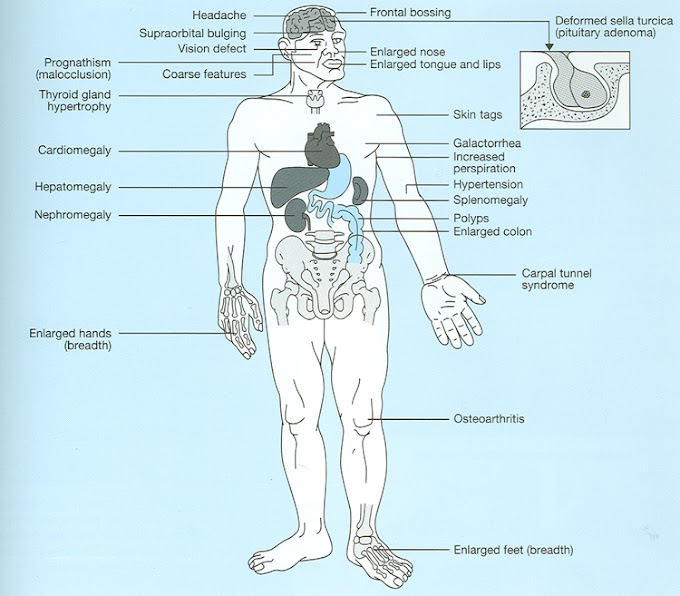Definition
Ovarian cancer is a disease in which cancer cells grow in the ovaries. The ovaries are a pair of organs in the pelvic area of women that produce eggs and female hormones.
Cancer occurs when cells in the body (in this case ovarian cells) divide without control or order. Normally, cells divide in a regulated manner. If cells keep dividing uncontrollably when new cells are not needed, a mass of tissue forms, called a growth or tumor. The term cancer refers to malignant tumors, which can invade nearby tissues and can spread to other parts of the body. A benign tumor does not invade or spread.
Causes
The cause of ovarian cancer is not known. However, research shows that certain risk factors are associated with the disease.
Risk Factors
A risk factor is something that increases your chance of getting a disease or condition.
• Sex: Female
• Family history of ovarian cancer, especially in mother, sister, or daughter
• Age: 50 or older
• Menstrual history – first period before age 12, no childbirth or first childbirth after age 30, and late menopause
• Personal history of breast or colon cancer
Symptoms
Ovarian cancer generally doesn't cause symptoms until the later stages.
Symptoms include:
• Abdominal discomfort and/or pain
• Gas, indigestion, pressure, swelling, bloating, or cramps
• Nausea, diarrhea, constipation, or frequent urination
• Loss of appetite
• Feeling of fullness even after only a light meal
• Unexplained weight gain or loss
• Abnormal bleeding from the vagina
Note: These symptoms may also be caused by other, less serious health conditions. Anyone experiencing these symptoms should see a doctor.
Diagnosis
Your doctor will ask you about your symptoms and medical history, and perform a physical examination.
Tests may include:
Pelvic Exam – use of a physician's gloved finger to examine the uterus, vagina, ovaries, fallopian tubes, bladder and rectum for lumps or a change in size or shape
Imaging Tests (Ultrasound, CT scan, and MRI scan) – tests that create pictures of the ovaries and surrounding tissues that will show if there is a tumor
Lower GI Series or Barium Enema – a series of x-rays of the colon and rectum after having an enema containing barium
Biopsy – removal of a sample of ovarian tissue to test for cancer cells
CA-125 Assay – a blood test to measure the level of CA-125, a substance in the blood that indicates ovarian cancer may be present
Treatment
Once ovarian cancer is found, staging tests are performed to find out if the cancer has spread and, if so, to what extent. Treatment for ovarian cancer depends on the extent of the cancer and the general health of the patient.
Treatments include:
Surgery – surgical removal of a cancerous tumor and nearby tissues, and possibly nearby lymph nodes.
Chemotherapy – the use of drugs to kill cancer cells. Chemotherapy may be given in many forms including: pill, injection, and via a catheter. The drugs enter the bloodstream and travel through the body killing mostly cancer cells, but also some healthy cells.
Radiation Therapy (Radiotherapy) – the use of radiation to kill cancer cells and shrink tumors. Radiation may be:
External Radiation Therapy - radiation directed at the abdomen from a source outside the body
General Approach- the general approach to patients with ovarian cancer is to undergo as complete a surgical procedure as possible first. This must be performed by a qualified gynecologic oncologist. Thereafter, and based on the findings, patients then receive chemotherapy usually. Sometimes, radiation therapy of the abdomen is offered. The most appropriate therapy is based on the experience of the treating physicians and the toxicities expected.
Prevention
There are no guidelines for preventing ovarian cancer, because the cause is unknown and symptoms are not present in the early stages. If you think you are at risk for ovarian cancer, talk to your doctor about ways to reduce your risk factors and an appropriate schedule of check-ups.
recent posts
Blog Archive
-
▼
2009
(35)
-
▼
November
(18)
- Achondroplasia : Causes, Symptoms, Diagnosis, Trea...
- Achilles Tendinitis : Causes, Symptoms, Diagnosis,...
- Achalasia : Causes, Symptoms, Diagnosis, Treatment...
- Tooth Abscess: Causes, Symptoms, Diagnosis, Treatm...
- Aarskog-Scott Syndrome : Definition,Causes,Symptom...
- Encephalitis
- Depression: Definition,Causes,Risk Factors,Symptio...
- Thyroid Cancer
- Throat Cancer (Oropharyngeal Cancer; Nasopharyngea...
- Testicular Cancer [Cancer of the testicle]
- Stomach Cancer [Gastric Cancer]
- Skin Cancer [Basal Cell Carcinoma : Squamous Cell ...
- Prostate Cancer [Cancer of the Prostate]
- Pancreatic Cancer [Cancer of the Pancreas]
- Ovarian Cancer [Cancer of the Ovaries]
- Liver Cancer [Malignant Hepatoma : Hepatocellular ...
- Esophageal Cancer
- Kidney Cancer [Renal Cell Carcinoma]
-
▼
November
(18)
Labels
A
Aarskog Syndrome
Aase Syndrome
Abdominal Aortic Aneurysm
Acanthosis Nigricans
Acetaminophen and Codeine Overdose
Acetaminophen Overdose
Achondrogenesis
Achondroplasia
Acidosis
Bladder
Blood
Bone
Brain
Breast
Cancer
Cold
Depression
Diabetes
E
Ear
Esophagus
Face
Fever
Fitness
Health Conditions
Heart
Kidney
Liver
Lungs
Ovary
Pancreas
Poisons
Prostate
Skin
Stomach
Testicle
Throat
Thyroid
Tooth
Typhiod
Ulcer
Uterine
About me

Aenean sollicitudin, lorem quis bibendum auctor, nisi elit consequat ipsum, nec sagittis sem nibh id elit. Duis sed odio sit amet nibh vulputate.
Disclaimer
The information contained in this website is for general information purposes only. A qualified medical professional should always be consulted prior to undertaking or engaging in any aspect related to your’s or someone else health.All the contents here are public,if the contents are objectionable to anyone's copyright please contact me.
Popular Posts
Metabolic Acidosis
Monday, April 23, 2012
What is Type 2 Diabetes?
Monday, June 17, 2013

Acromegaly:Definition,Causes,Symptoms,Diagnosis,Treatment
Wednesday, December 02, 2009
Subscribe Us
Categories
Created By SoraTemplates | Distributed By Blogger Themes

0 Comments